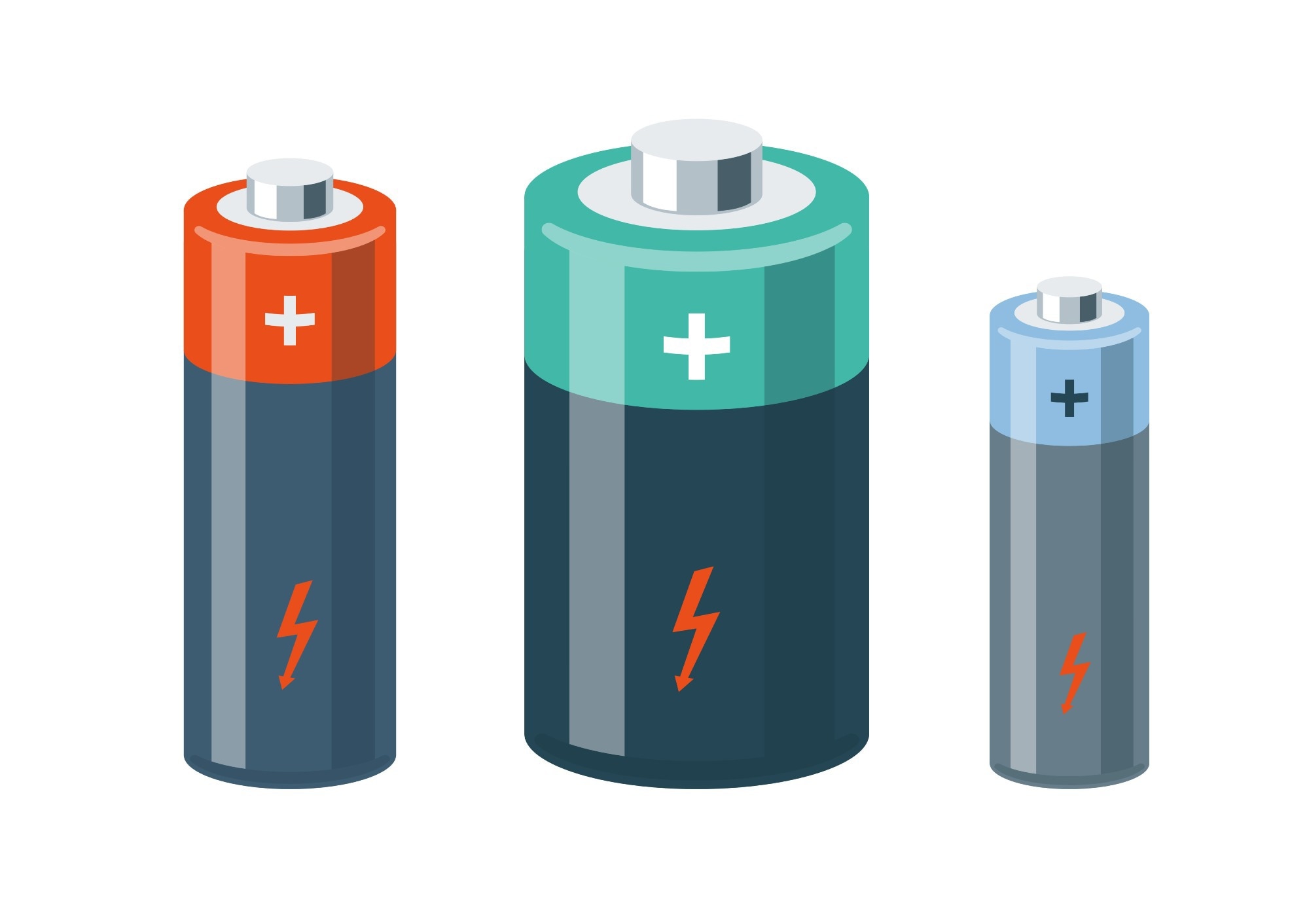In a paper recently published in the journal ACS Energy Letters, researchers demonstrated that reactive metal electrodes could be stabilized by regulating their conductivity using ionically non-conductive substances that form cation-transmissive interphases.

Study: A Heterogeneous Oxide Enables Reversible Calcium Electrodeposition for a Calcium Battery. Image Credit: petovarga/Shutterstock.com
Background
The safety and sustainability concerns regarding lithium-ion batteries have prompted research into batteries with safer and higher energy density, with sustainable alternatives such as multivalent rechargeable metal batteries. However, due to the decomposition of conventional electrolytes at high reductive metal deposition potentials, reversible calcium (Ca) electrodeposition can be challenging.
Recently, it was observed that metallic Ca anodes could be stabilized with the solid electrolyte interphases (SEIs) that are spontaneously formed. However, a correlation of the electrode performance with the interphase identity is necessary to attain a long cycle-life and energy-efficient Ca anode.
Designing the Electrolytes
The identification of specific chemistries and structures enabling Ca2+ migration while preventing electron transport is a necessary initial requirement in designing electrolytes that yield enhanced SEIs. A study by Forero-Saboya et al. concluded that a nanocrystalline, inhomogeneous SEI with an outer CaF2, a cross-linked boron layer, and an inner CaO layer supports Ca2+ transport at 100°C, whereas a CaCO3 layer prevents Ca2+ transport.
Due to its excellent room temperature Ca cycling and ensured reduction in parasitic reactions, Ca(BH4)2-tetrahydrofuran (THF) has been widely researched. This electrolyte forms dense, continuous Ca films at adequate current densities and hence can be used to study SEIs. Furthermore, a study by Wang et al. proposed that a microscopic CaH2 layer can function as the SEI. However, other experiments indicate greater energies for cation vacancy formation, as a result of which CaH2 could be a less ideal cation conductor.
These studies show that there is currently no consensus related to the structural features as well as the chemical phase(s) that are required in a practical Ca SEI. This suggests the urgent need to simplify and map the structure and chemistry of SEIs developed from the most efficient class of Ca electrolytes. According to the authors, the characterization of the SEIs using the model Ca(BH4)2-THF electrolyte can be useful in the development of knowledge that can be used in the design of optimal SEIs for reversible Ca electrodeposition.
SEI Characterization
Characterizing SEIs can be challenging since the surface layers can be air-sensitive, nanoscopic, and prone to damage during preparation. In another study, Ca plating from Ca(BH4)2-THF was analyzed using transmission electron microscopy (TEM). Moreover, it has been identified that TEM studies under cryogenic conditions (cryo-TEM) can be a critical method for producing high-resolution images of SEIs.
The team determined the structure and chemistry of the Ca interphases by applying a cryo-TEM workflow. The Ca interphase created during the preliminary electrodeposition of galvanostatic Ca on precycled gold consisted of a nanocrystalline calcium oxide (CaO) layer with minor amounts of carbonate and calcium borate.
Ca Electrodeposition
Ca electrodeposition at room temperature yielded continuous, fully dense, and columnar films over a broad current density range. The use of gold for electrodeposition ensured adequate nucleation and reduction in the Ca nucleation overpotential by forming a surface alloy with Ca. Additionally, the team observed that the formation of columnar, dense Ca deposits required the concentration of sodium (Na) at or above a critical amount. The team further proposed that the accommodation of Ca on the surface of the anode is facilitated by Na through the enhancement of Ca surface diffusion.
It has been hypothesized that CaH2 is the main constituent of Ca(BH4)2-THF, which can facilitate Ca2+ transport without destabilizing the metal through self-discharge. The voids in CaH2 can be filled with inclusions formed by the segregation of hydrogen (H) from the Ca-H intermediate phase which leads to the formation of CaH2 during electrodeposition. Moreover, the enrichment of Na at the CaH2 boundaries indicates the expulsion of Na from the CaH2 phase. However, the interphases that are formed on electrodeposited Ca highlight the greater presence of CaO while CaH2 is absent. The interphase is seen as a structurally and compositionally well-defined layer that is sandwiched between the Ca metal and the surrounding vitreous electrolyte.
Thus, CaO is identified as the preliminary component of the SEI through chemical mapping. Conducting multivariate analysis on the core loss electron energy loss spectroscopy (CL EELS) data indicates a prominent layer formed by a chemical component between the electrolyte and the SEI. The team concluded the CaO interphase to be largely heterogeneous, with minor amounts of carbonate and Ca borate distributed all over the film.
Conclusions
To summarize, the team analyzed the structure and chemistry of Ca interphases using TEM, which showed the highest coulombic efficiencies (CEs) for Ca cycling at room temperature. Furthermore, it was demonstrated that the interphases formed from the Ca(BH4)2-THF slowed the metal self-discharge and can be useful in the creation of favorable Ca2+ transport pathways. According to the authors, a rational design of the interfacial and bulk Ca2+ salvation structure can manipulate oxide heterogeneity and improve Ca2+ transport for a high-efficiency, high-rate cycling.
More from AZoM: ICP-MS for Trace Metal Analysis
Disclaimer: The views expressed here are those of the author expressed in their private capacity and do not necessarily represent the views of AZoM.com Limited T/A AZoNetwork the owner and operator of this website. This disclaimer forms part of the Terms and conditions of use of this website.
Sources:
McClary, Scott A. et al. A Heterogeneous Oxide Enables Reversible Calcium Electrodeposition for a Calcium Battery, ACS Energy Letters 0, 7. https://doi.org/10.1021/acsenergylett.2c01443
Forero-Saboya, J.; Davoisne, C.; Dedryvère, R.; Yousef, I.; Canepa, P.; Ponrouch, A. Understanding the nature of the passivation layer enabling reversible calcium plating. Energy Environ. Sci. 2020, 13 (10), 3423−3431.
Wang, D. et al. Plating and stripping calcium in an organic electrolyte. Nat. Mater. 2018, 17 (1), 16−20.